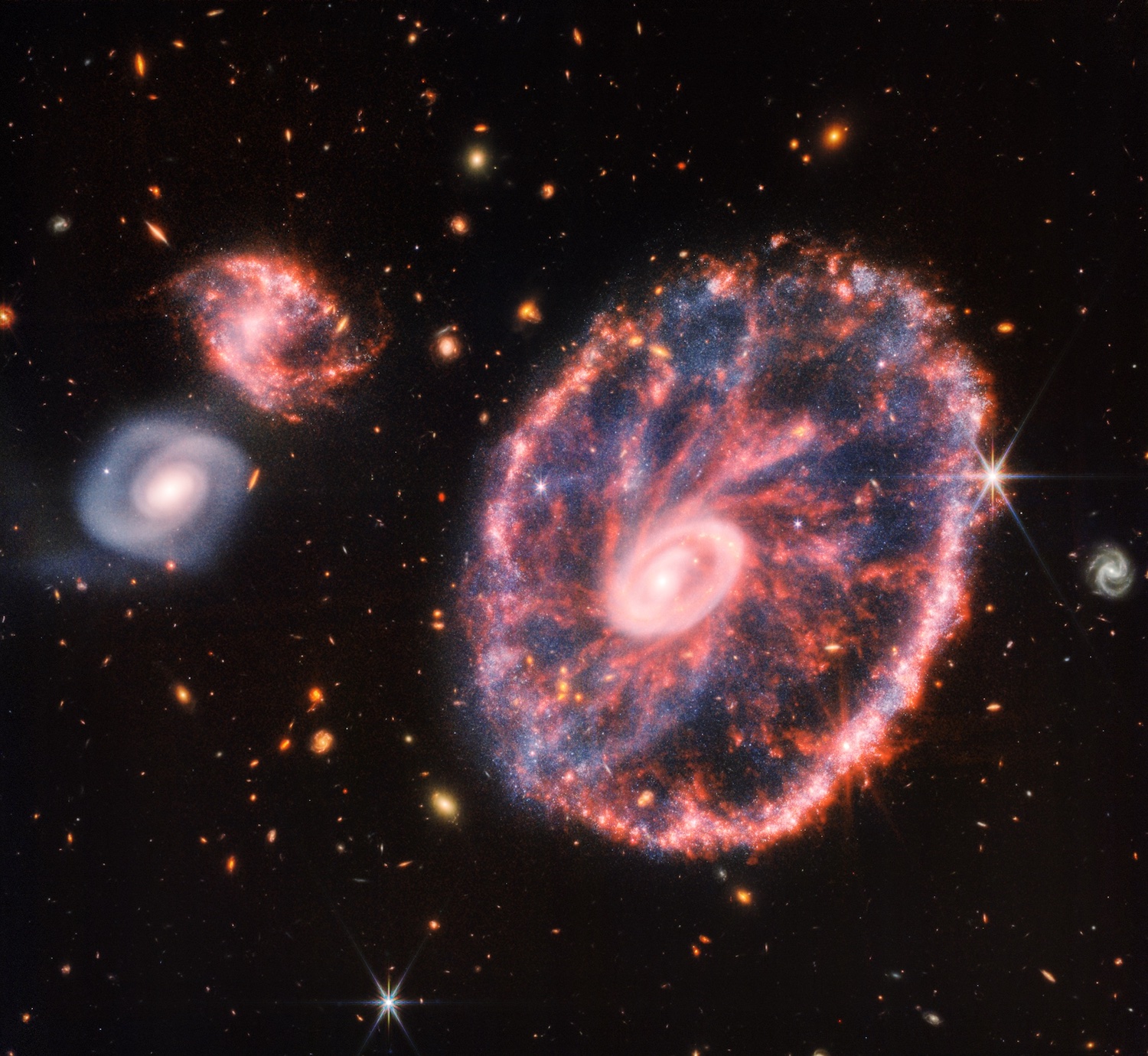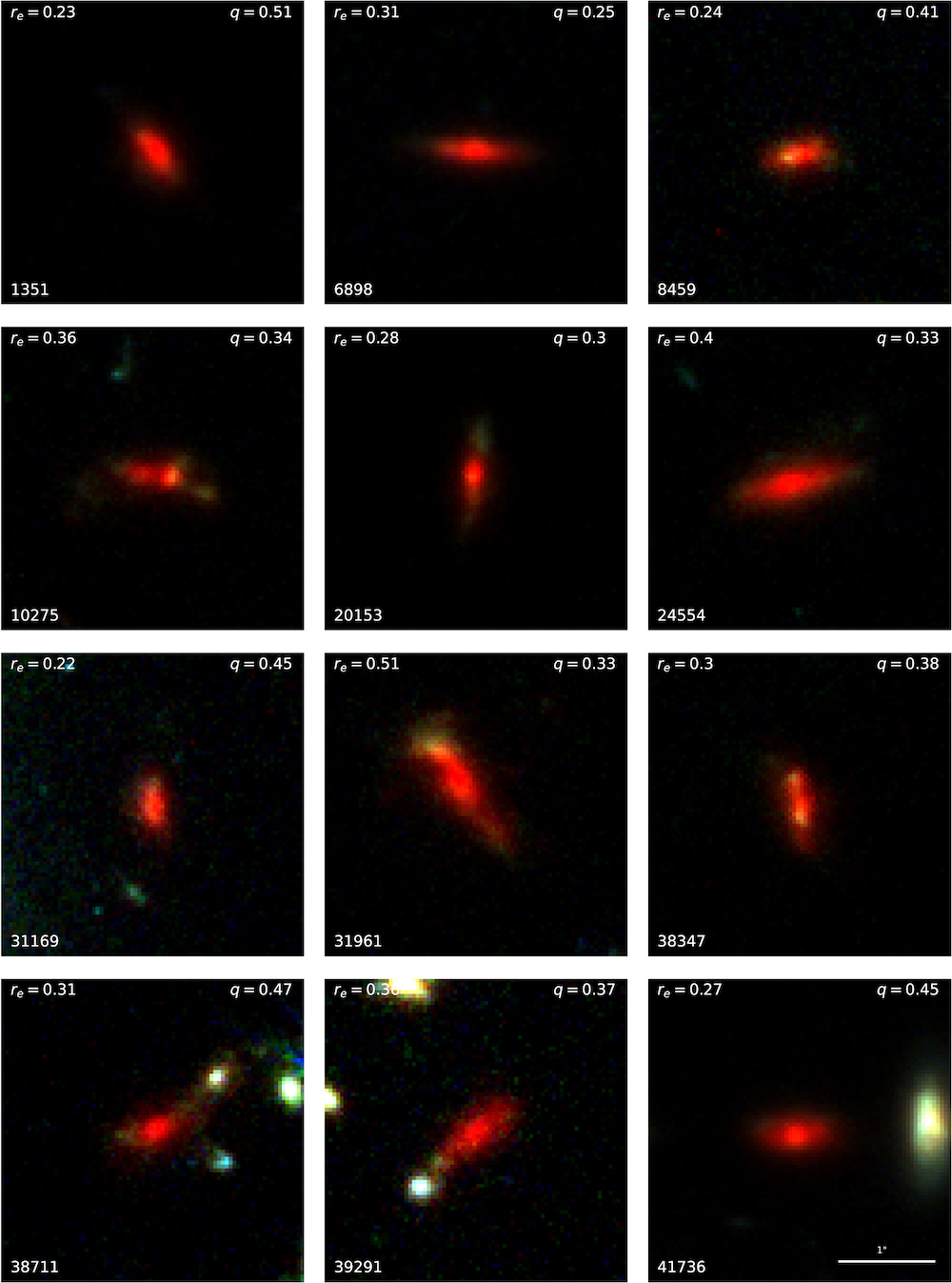JWST images of early galaxies have turned up a population of flat, red, extended disks that may have been entirely missed by previous surveys.

NASA / ESA / CSA / STScI
JWST has given us a new look at galaxies as they were in the first few billion years of the universe. Among the newly discovered galaxies is a population of flat, red, extended disks that may have been entirely missed by previous surveys.
Dusty Galaxies in the Distant Universe
To understand how today’s galaxies came to be as they are, we need to study galaxies in the distant past. Among the galaxies we know to have existed at redshift (z) greater than 2 — up to when the universe was a little more than 3 billion years old — are massive, dusty galaxies forming stars at a furious rate.
To study the structure and evolution of these galaxies, we need a telescope that can resolve fine details and is sensitive to dust-reddened photons. The Hubble Space Telescope has the resolving power but doesn’t span the necessary wavelength range. The Spitzer Space Telescope could see the sought-after infrared wavelengths but lacked the ability to pick out the fine details. JWST marries these two requirements, opening a window onto the “Hubble-dark” universe of dusty galaxies.
JWST Spies Hidden Galaxies

Adapted from Nelson et al. / Astrophysical Journal Letters 2023
In a recently published article, a team led by Erica Nelson (University of Colorado) has reported on their analysis of JWST observations from the Cosmic Evolution Early Release Science (CEERS) Survey. This survey was conducted at infrared wavelengths of a few microns (1 micron = 10-6 meter). The same field of view surveyed by CEERS was also visited by the Hubble Space Telescope during the Cosmic Assembly Near-infrared Deep Extragalactic Legacy Survey (CANDELS), though Hubble viewed the area at shorter wavelengths.
Nelson and collaborators noticed that the new JWST images contained galaxies that were absent in the Hubble images of the same region. By selecting for galaxies with certain color characteristics, the team picked out 26 galaxies that were bright in the JWST images but missing in the Hubble images. Among these newfound galaxies are a dozen that are remarkably extended rather than compact — a potentially unexplored population of galaxies present 1–3 billion years after the Big Bang.
Red Through and Through

Adapted from Nelson et al. / Astrophysical Journal Letters 2023
These 12 galaxies are surprising in two key ways. First, these galaxies are not just red — they are also red from their cores to their outskirts. Typically, we think of disk galaxies as having reddish cores that host older stars and bluish spiral arms that are home to young, hot stars. These newly discovered galaxies are red through and through, which Nelson and collaborators interpret to mean they are incredibly dusty.
Second, these galaxies are remarkably flat, and they appear to be seen nearly edge on. Nelson and collaborators suggest that the color criteria they used to select the galaxies might be biased toward edge-on, dusty galaxies, which would appear redder than their face-on counterparts. The team notes that galaxies in this size and mass range would be expected to evolve into the massive galaxies we see today, but their lack of a distinct central bulge of stars is surprising. Luckily, spectroscopy, radio-wavelength observations, and simulations all have the potential to improve our understanding of these curious galaxies.
Citation
“JWST Reveals a Population of Ultrared, Flattened Galaxies at 2 ≲ z ≲ 6 Previously Missed by HST,” Erica J. Nelson et al 2023 ApJL 948 L18. doi:10.3847/2041-8213/acc1e1
This post originally appeared on AAS Nova, which features research highlights from the journals of the American Astronomical Society.
 2
2









Comments
mxyzptlk
May 27, 2023 at 12:10 am
What a fascinating discovery. Hooray JWST ! What discoveries lie ahead for this fantastic orbiting observatory?
You must be logged in to post a comment.
Martian-Bachelor
May 29, 2023 at 7:39 pm
They sure look red in the picture.
Any idea what the little numbers mean? I take it R-sub-e is some sort of effective radius, but what's q?
You must be logged in to post a comment.
You must be logged in to post a comment.